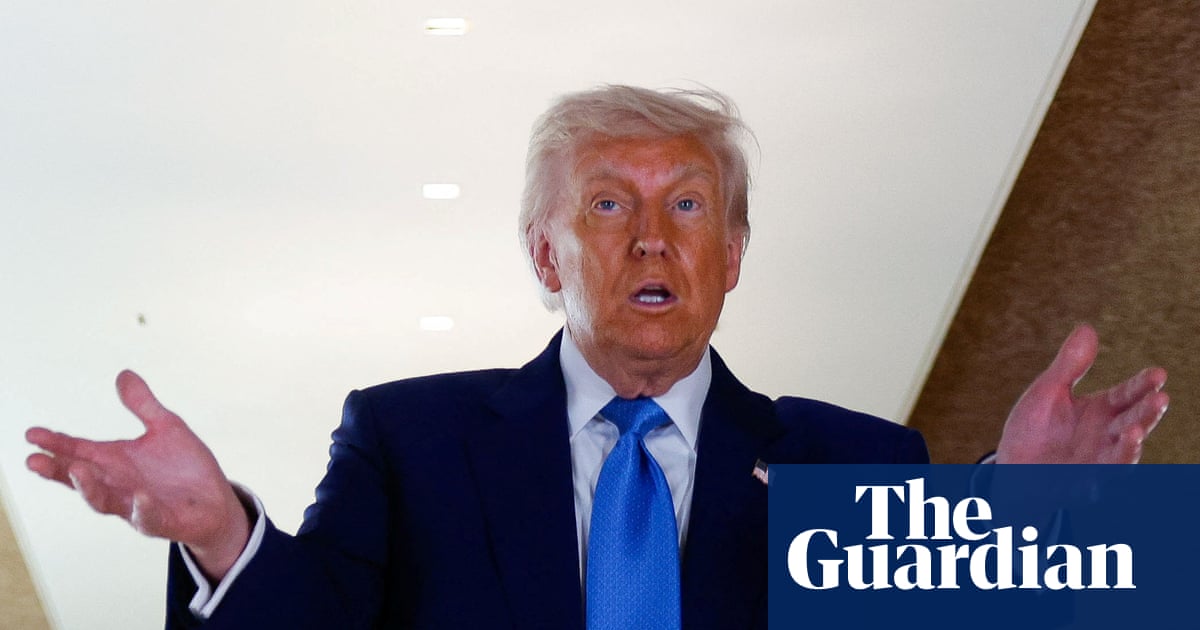Donald Trumpaccused the former FBI directorJames Comeyon Friday of calling for his assassination in a coded social media post written in seashells.
Comey’sInstagrampost – a photograph of seashells on a beach arranged to spell the numbers 8647, which he captioned “Cool shell formation on my beach walk” – was used by rightwing supporters of Trump to claim that it was a call to assassinate the US president. TheSecret Servicesaid it has launched an investigation.
Comey has said it “never occurred to me” that the numbers represented a coded threat. The number 86 is common slang for stopping or getting rid of something, typically old equipment, or being ejected from an establishment such as a bar, and is often a synonym for “nix”. The number 47 could be understood to indicate Trump, the 47th president.
“He knew exactly what that meant. A child knows what that meant. If you’re the FBI director and you don’t know what that meant? That meant assassination. And it says it loud and clear,” Trump said in an interview with Fox News from Abu Dhabi, where he is wrapping up a four-day Middle East trip.
Trump claimed Comey “was hit so hard because people like me and they like what’s happening with our country”, adding: “And he’s calling for the assassination of the president.”
Comey, who was fired by Trump in 2017 during an investigation into Russian collusion in the 2016 election, removed the post hours after it began to draw attention from Trump administration officials and supporters.
After taking down the post, Comey said he thought it was a political message but said it did not occur to him that it could have been associated with a call to violence.
The exchanges are the latest in an ongoing war over inflamed political rhetoric. Two assassination attempts were made against the president last year, both from people without any clear partisan ideology.
The number 86 has also been used by Republicans calling for the impeachment of Joe Biden: for example,T-shirts sold on Amazon read “8846”, indicating a call to impeach Biden (the 46th president).
Overheated political rhetoric has long been a subject of controversy. Biden said last July it had been a mistake for him to say “time to put Trump in a bullseye”, days before Saturday’s assassination attempt on his election rival, while Trump has repeatedly used similar language, including suggesting that the former Republican congresswoman Liz Cheney might not be such a “warhawk” if she had rifles “shooting at her” to see how she felt.
A spokesperson for the Secret Serviceconfirmed the agency was“aware of the incident” and said it would “vigorously investigate” any potential threat, but did not offer further details.
In a statement, Comey said: “I posted earlier a picture of some shells I saw today on a beach walk, which I assumed were a political message.
“I didn’t realize some folks associate those numbers with violence. It never occurred to me, but I oppose violence of any kind so I took the post down.”
The post ignited a firestorm on the right.
Sign up toThis Week in Trumpland
A deep dive into the policies, controversies and oddities surrounding the Trump administration
after newsletter promotion
“Disgraced former FBI director James Comey just called for the assassination of POTUS Trump,” the homeland security director, Kristi Noem, wrote on X. “DHS andSecret Serviceis investigating this threat and will respond appropriately.”
The director of the FBI, Kash Patel,saidhis agency would “provide all necessary support” as part of an investigation headed by the Secret Service.
Anthony Guglielmi, a spokesperson for the presidential security agency,saidon social media that the agency investigates anything that could be taken as a threat. “We are aware of the social media posts by the former FBI Director & we take rhetoric like this very seriously,” he added.
Tulsi Gabbard, director of national intelligence, said she didn’t buy Comey’s explanation that the message carried no greater meaning. Gabbard said Comey had “just issued a call to action to murder the president of the United States”.
“As a former FBI director and someone who spent most of his career prosecuting mobsters and gangsters, he knew exactly what he was doing and must be held accountable under the full force of the law,”Gabbard posted on X.
Gabbard later told Fox Newsthat Comey was “issuing a hit” on the president and that “the dangerousness of this cannot be underestimated.”
The post comes as the former FBI director is about to publish FDR Drive, the third installment of a crime series about a fictional New York lawyer, Nora Carleton.Publisher’s Weekly outlinedthe plot as centering on a US attorney who tries to bring to justice “a far-right media personality with a popular podcast vilifying those he thinks are destroying America: intellectuals, immigrants, and people of color”.
